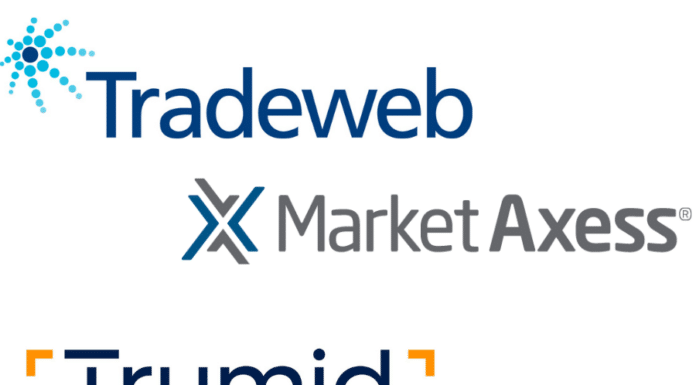Moving to a data-led model of trading requires a change in culture across the desk, as Pictet Asset Management’s head of Fixed Income Trading explains.
Carl James is global head of Fixed Income Trading for Pictet Asset Management. He manages a team of 16 dealers, located in Geneva, London, Hong Kong and Singapore.
He has a particular interest in how the market will evolve with the impact of regulation, technology and the new economic reality, and making the most of the opportunities that will emerge.
He has led global teams at BNP Asset Management, Henderson Global Investors, UBS Global Asset Management and Phillips and Drew Fund Management implementing new technology and practices.
What is driving you to reassess trading technology and process?
The buy side is in an interesting phase of development with the confluence of regulation and technology. Buy-side dealers will be required to make some quite interesting decisions. From a regulatory standpoint, it will be under far greater scrutiny and from a technology stance it will have to leverage increased functionality.
Post-MiFID II, a huge amount of data will be available partly as a result of trade reporting. This data can be analysed and you can start to make better informed decisions on the back of it.
Have you found anything that stands out from analysing this data?
Yes. We have reviewed various elements of our internal and external data. I wanted to understand if we would find any patterns or specific correlations that we can make better informed decisions on.
We have seen the banks making specific efforts on their axes and trade quotes on specific bonds; or countries; or sectors. We have also seen changes to their quotes over a specific period. The relationship between a bank’s reporting date and their axes and quotes is something where we have seen a strong correlation. This is pretty much a universal theme across all banks.
This information allows us to make a better informed decision on our trading strategy and reduce information leakage.
Is that symptomatic of a larger issue?
What it highlights to the buy side, is not to accept or just take the information we are given. Test it. Are the brokers treating you as well as you think they are? Are the platforms doing the job that they think they are doing? If a broker is saying, “We are the best in G10 rates”, you have the underlying data and you can challenge them, if necessary. There might be a complete outlier you have never used before, but systematic analysis of the data lets you make better informed decisions, and refine your trading strategy at each point.
What is your perception of fixed income transaction cost analysis (TCA)?
They have basically picked up the equity methodology and dumped it on fixed income. Implementation shortfall has some relevance for Vodafone equities. I think it has almost no relevance for, say an Indonesian bond. I can understand why that’s an interesting metric on the equity side, but it has so little relevance to what it is you are trying to achieve on the bond side, you should just not bother with it.
So where do you start from in fixed income TCA?
Using technology and regulation you are able to get a best execution methodology. At each point of the execution process you can use underlying data that enables you to make a better informed decision. Should I go agency? Should I go principal? Do I go for three quotes, or five quotes? Which three brokers should I chose? If you have underlying data then you are making decisions that should lead to a better outcome, and you are able to demonstrate with quantitative data why you are making these decisions.
You can demonstrate that at the point of the decision you made the right decision, at the right time, at each stage.
There is not this obsession about price. The obsession is about the process; being much more systematic. If you look at MiFID I, the definition of best execution is about process. There seems to be this misguided approach on the equity side to measure against VWAP or implementation shortfall. I would like to see a methodology where it leads to better informed decisions; improved feedback so that dealers can change their behaviour and process. It should be about helping to develop a more efficient and effective execution.
How would you describe the effect of this methodology?
It leads to behavioural change. There is a whole decision tree that you need to go through, and from a buy-side dealing perspective that’s about behavioural change. I think we need to give this to the dealers so that they can make those better informed decisions. At the core it is about making sure that dealers make a better informed decision. The outputs can be used in a variety of ways.
Can you give examples of how that can be used?
The data you capture can be used on a pre-, during and post-trade basis. You are also able to evaluate your brokers and the platforms you use. Additionally you can analyse your PMs (portfolio managers) and dealers. For example, is there behavioural bias with the PMs and/or the dealers? Are there any patterns with regard to what and when orders are generated? Can you make better decisions on where and when you execute?
Utilising this data means you can learn from it, on a pre-, during and post-trade basis.
What are your operational goals this year?
One of my goals is to continue to ensure the dealers and PMs are fully integrated. In all of our locations the dealers and PMs are sat together. The PMs and dealers have specific morning meetings, where portfolios are discussed along with current views and ideas. The dealers offer up trading strategies, along with liquidity advice.
In addition, there is a huge amount of heavy lifting to prepare for the raft of legislation. This involves technology implementation, process change and behavioural change.
How challenging is that process?
You can’t snap your fingers and it’s done. There are huge change elements that require co-ordination and structure. The old style of relationship between a broker and a PM; and a broker and a buy-side dealer is changing enormously. Paying for research is a big, big difference, and that will significantly change the nature of relationships as well.
Leveraging technology to make the dealers more effective and more efficient is something we are investing a lot of time and energy in – in making better use of the dealers’ bandwidth, by collapsing operational processes and automating what you can, where you can. This means they can focus on the deals where they can leverage their skills and expertise to the maximum. Then the best execution methodology really shines.
Is bringing the team through that process of change hard?
To change that behaviour, is always difficult, however the dealing team understands and realises that change is happening, and is driving these changes forward. Each member of the dealing team is taking responsibility to take a specific initiative forward. These include: assessing platforms; big data and conclusions we can make from it; best execution methodology.
How do you see the team reacting to the process?
During our global dealers off-site event we talked through the themes and the vision that led us to think about some specific projects. These included a pre-trade dashboard, utilising internal and external data, and a global platform for new issues. A member of the team worked with IT to build a global new issue platform specifically for the dealers to identify which dealers in which countries are involved in a given new issue. These little developments change behaviour.
What other changes are ongoing?
MiFID II is obviously influencing a lot of the changes going forward. We are upgrading our OMS to a MiFID II compliant version that will bring improved functionality. We have put in place clearing for instruments, some of it mandatory, some not. The vision is to clear every relevant instrument.
Where do you see the role of automation in this process?
We want to get away from activities where a trader is purely processing data. I am drilling down into what we think is intellectually engaging and adds value. We are leveraging additional functionality, to give the dealers increased time to think about their trading strategy, and also to be more of a part of the investment – and less of the operational – processes.
Should platform providers be more reactive to buy-side needs?
The market is changing so fast that it presents a real challenge for platform providers to be offering something that the buy side either wants or can use. There are so many platforms currently available that the buy side have to think carefully which platforms they want to connect with.
The buy side has been used to eating what it is fed. To get what you want you have to ask for it, and in this new world you may have to build it, or have to pay for it.
What are you doing to engage with platform providers?
Of the platforms we use, we make sure that we actively engage with them, and participate in client sessions to help drive the platform forward.
My view is that the buy side needs to engage and push for what they want both at an individual level and at an industry level. This means that you are able to push forward your ideas and want-to-haves for the next release of functionality.
How does the ‘asking for’ and ‘paying for’ balance?
This balance is changing, due partly to the new economic reality but also because there are some new (disruptive) participants in the market.
I am currently looking at a platform that has some very interesting and useful functionality. We may partner with them and help them develop their platform. We therefore become ‘free’ subject matter experts. However, we get the specific functionality that we want.
Part of the analysis is to understand what time it will take to develop the platform and how much of our time will it take up.
My view is that there is currently a huge opportunity to engage with and speak to platforms/vendors to influence their future trajectory.
©Markets Media Europe 2025











